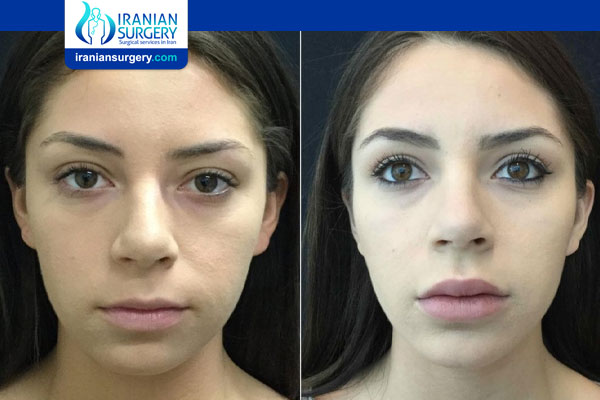Non surgical cheek augmentation
Chin Augmentation without surgery
Patients who would like to enhance the appearance of their chin may need a surgical procedure also called a genioplasty or chin implant. But many patients with minor or less severe irregularities of the chin can have a non-surgical shaping of the chin with a dermal filler injection, Restylane, Evolence, which is painless, safe, with a quick recovery and minimal downtime.
A non-surgical chin augmentation is an excellent and affordable option for patients who would like to achieve a more pleasing appearance without the risks of surgery.
What Is Non-Surgical Chin Augmentation with Filler Injections?
The non-surgical, noninvasive chin augmentation, or non-surgical genioplasty involves the use of a dermal filler, Evolence or Restylane injected to reshape and contour the chin to achieve a natural aesthetic appearance, in a quick, safe and effective out-patient treatment.
Who is a good candidate for Non-surgical Chin Augmentation?
Any patient who desires an improvement in the size and shape of the chin may be suitable for non-surgical chin shaping – chin augmentation. Patients with a small or weak chin can improve the balance of their face using an injectable filler – Evolence or Restylane. Also, patients who have deformities of the chin either from birth or from injuries can achieve significant improvement without the pain, risk and recovery associated with surgery.
Read more about : How Does Jaw Filler Work?
How Is Non-Surgical Chin Augmentation Treatment Performed?
Initial consultation will determine the goals of treatment, make note of any associated abnormalities or asymmetry and plan the optimum non-surgical chin shaping to achieve the ideal result in each patient. Treatment is carried out in the out-patient setting and takes 15 – 20 minutes. A local anesthetic injection is used to ensure that the treatment is as comfortable as possible. Evolence or Restylane is injected into the chin to improve the shape, profile, projection and symmetry.
Will Non-Surgical Chin Augmentation Treatment Be Painful / Cause Bruising?
Minimal discomfort is expected during the treatment and no bruising should occur with the careful techniques used. Any mild bruising will usually resolve after 1 week. Your chin may feel tender for the first 3 – 5 days.
When will results be seen following non-surgical chin augmentation?
Improvement in chin shape and projection will be seen immediately following non-surgical chin reshaping. Any swelling will resolve in 1 week.
How Long Will the Result of Non-Surgical Chin Augmentation Last?
Evolence will provide long lasting improvement in chin shape for approximately 12months. Restylane dermal filler will provide results that last for 6 to 9 months. Repeat treatments are recommended every 12 – 18 months to maintain the desired shape.
What Are the Side Effects or Risks Following Non-Surgical Chin Augmentation?
Mild discomfort, swelling and bruising can occur. Reactions following Restylane or Evolence are rare.
When Will I Be Able to Return to Normal Activities After Non-Surgical Chin Augmentation?
Restricted activities are advised for 48 hours following non-surgical chin reshaping. Normal activities can be resumed thereafter.
Source:
https://www.lbps.co.uk/chin-shaping/


